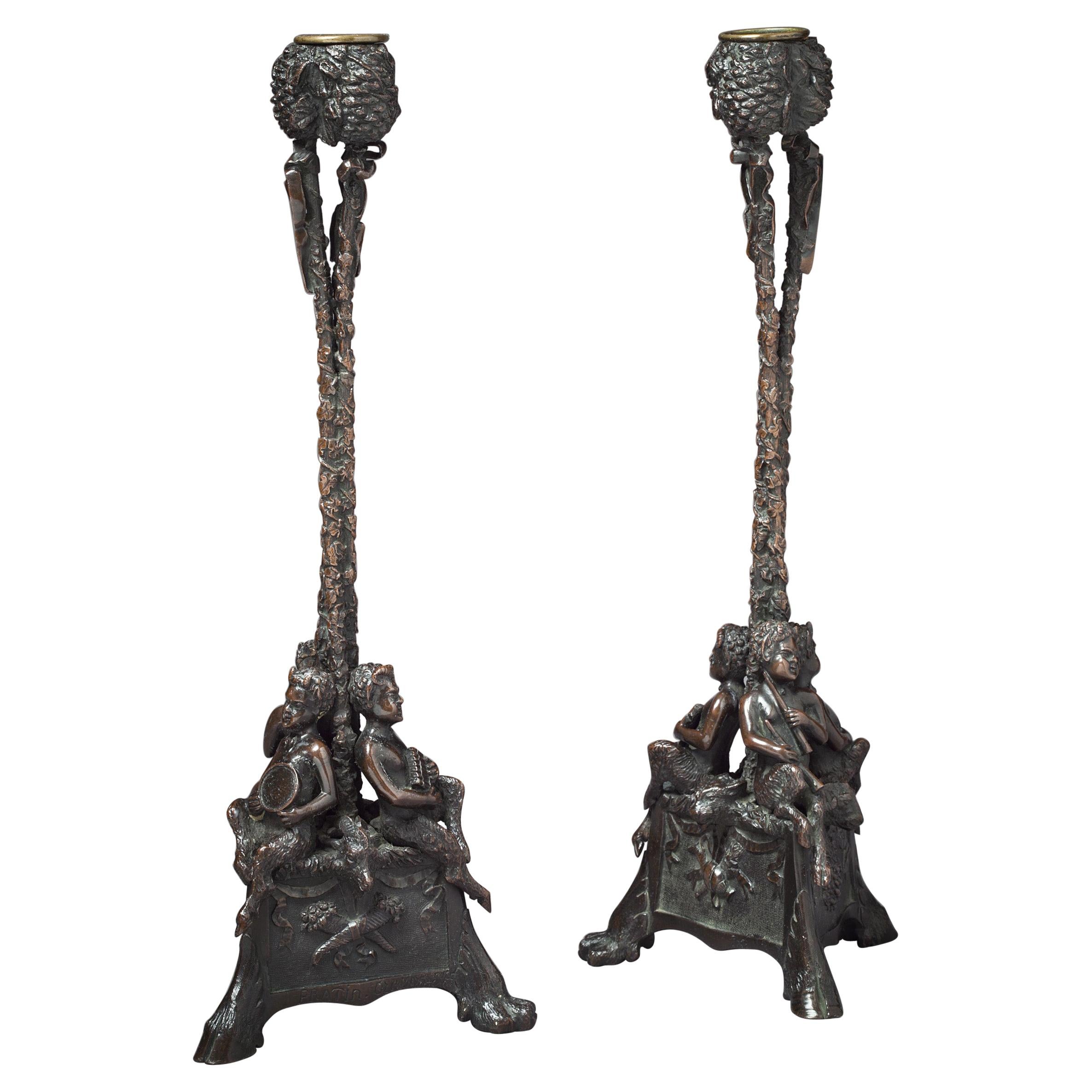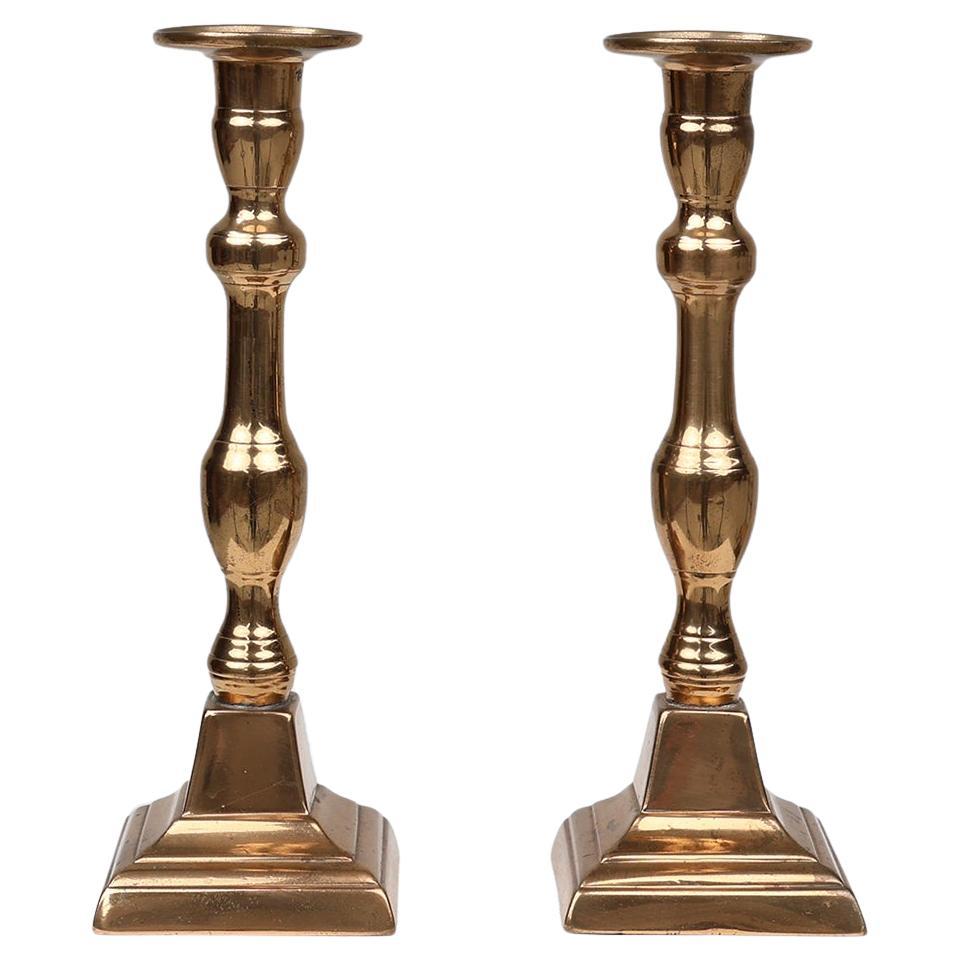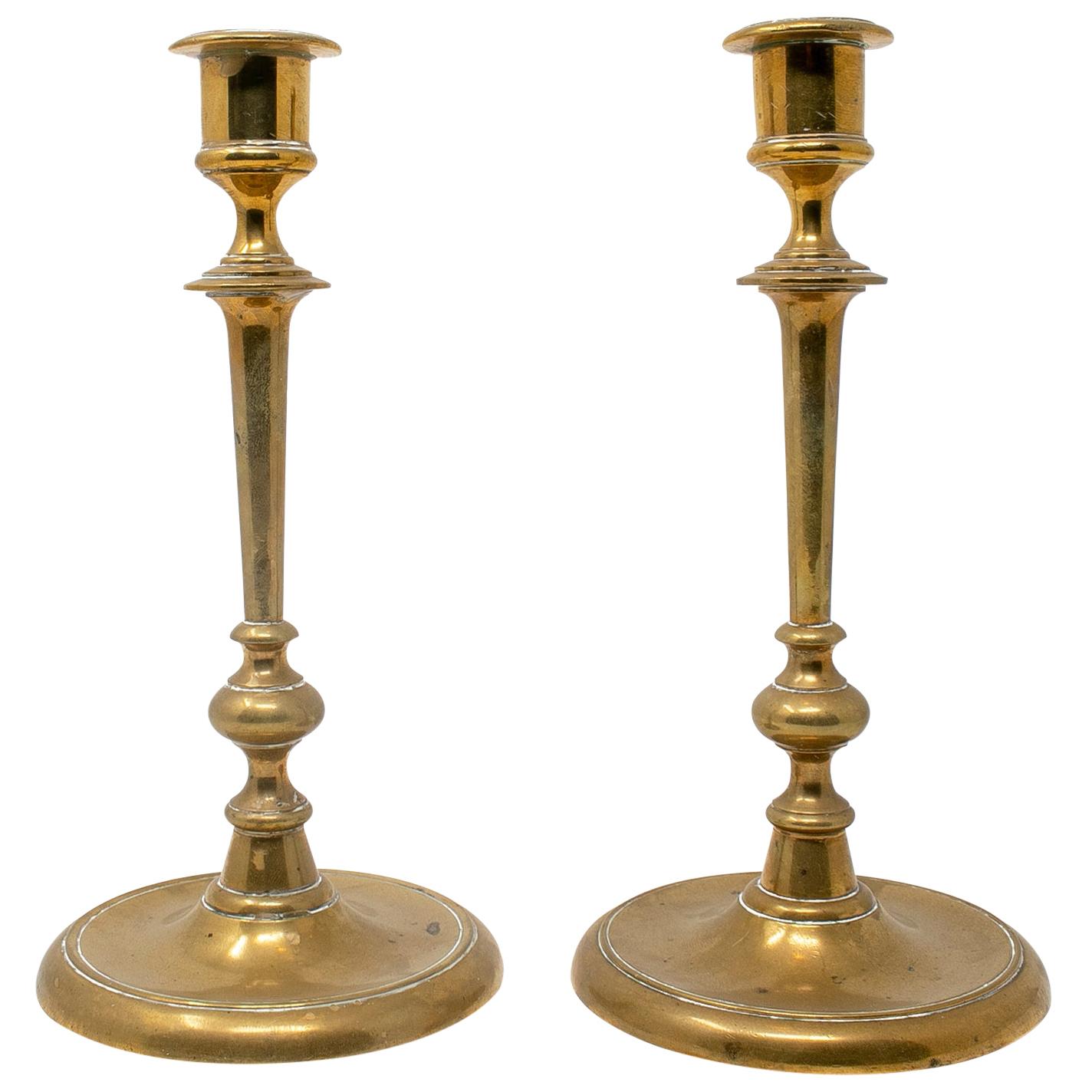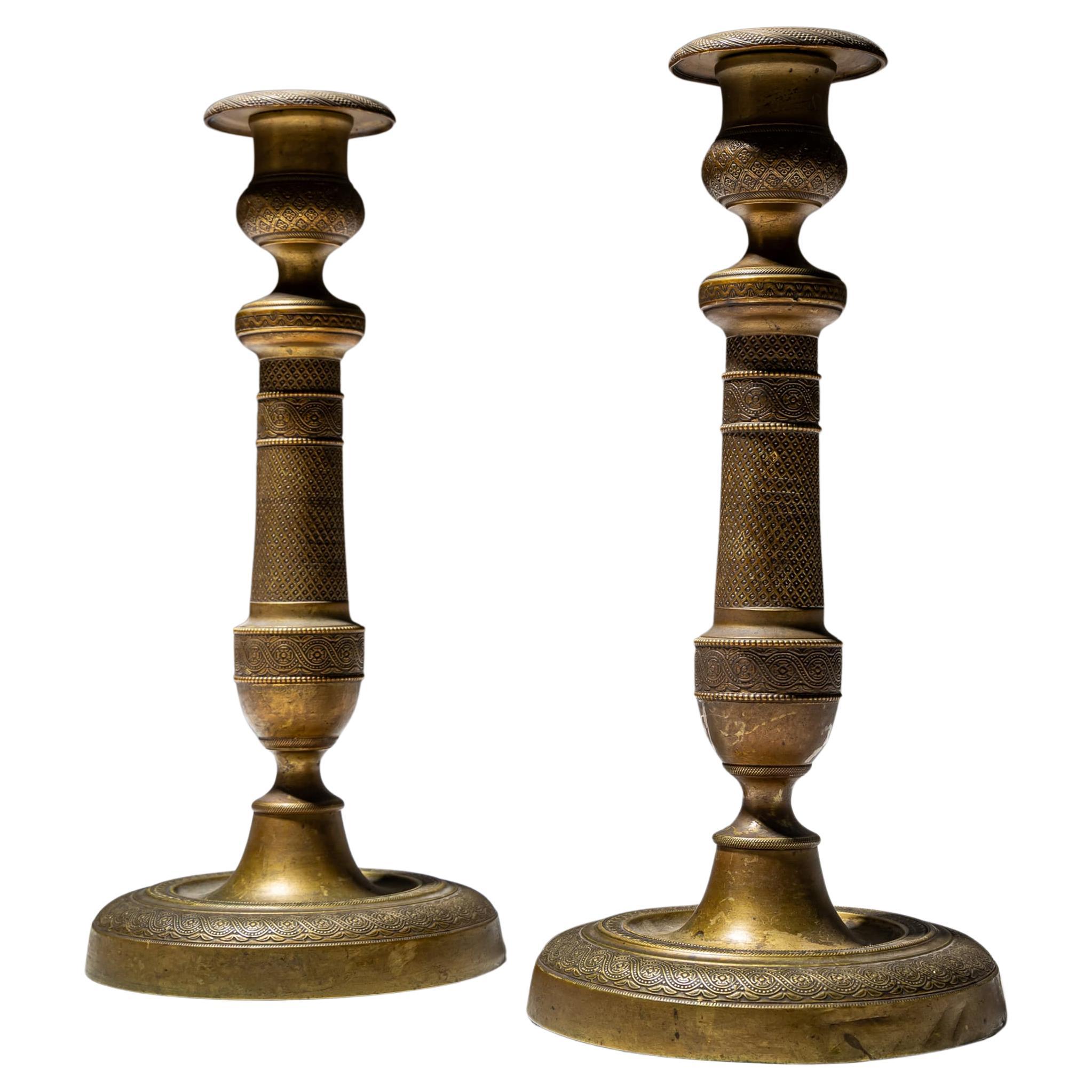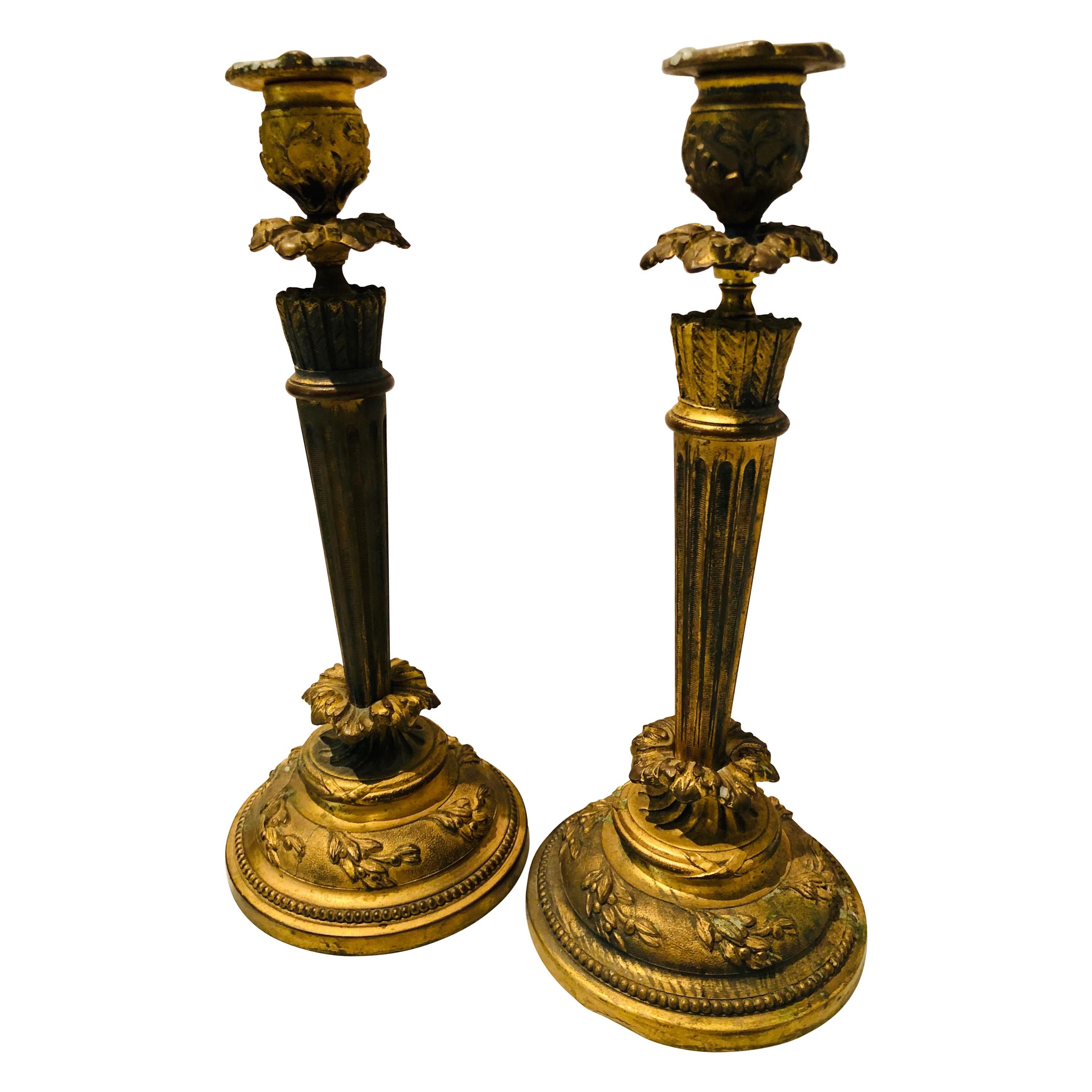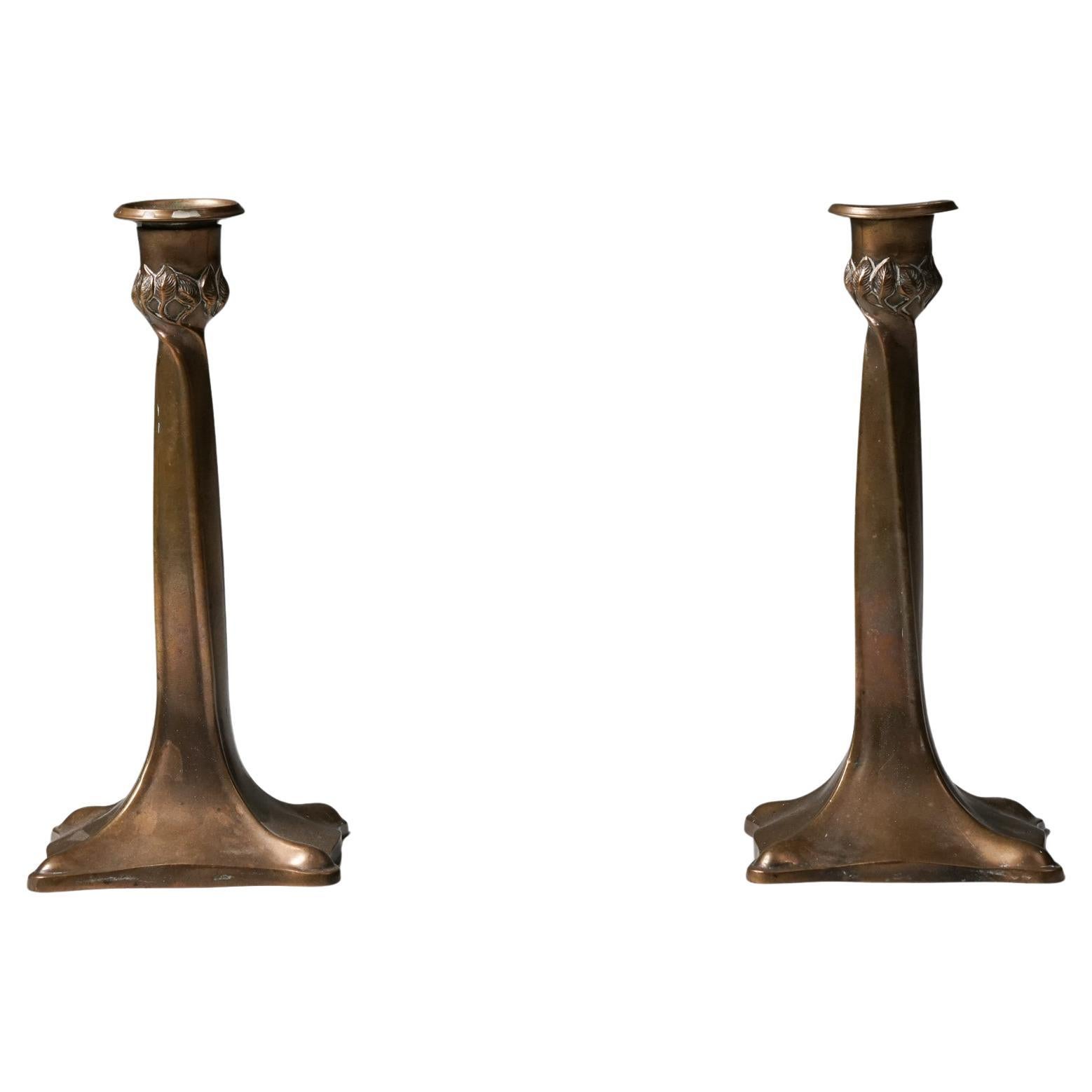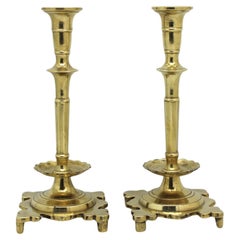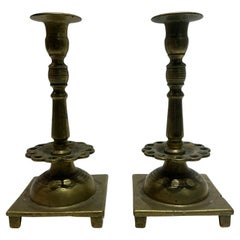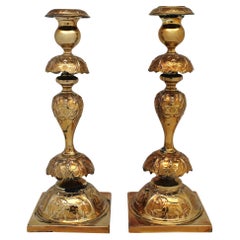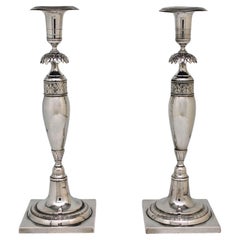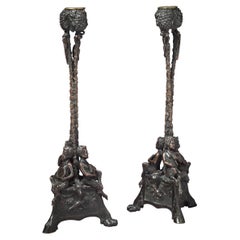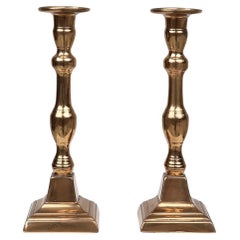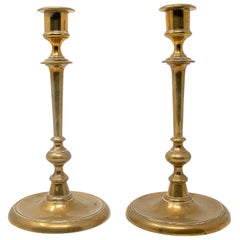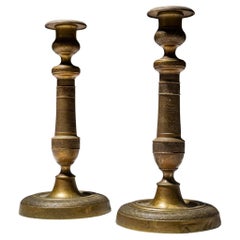Items Similar to A Pair of Bronze Anti-Semitic Candlesticks, Vienna circa 1880
Want more images or videos?
Request additional images or videos from the seller
1 of 5
A Pair of Bronze Anti-Semitic Candlesticks, Vienna circa 1880
$2,200
$2,75020% Off
£1,654.93
£2,068.6620% Off
€1,917.16
€2,396.4520% Off
CA$3,101.54
CA$3,876.9320% Off
A$3,449.12
A$4,311.4120% Off
CHF 1,810.33
CHF 2,262.9120% Off
MX$42,060.41
MX$52,575.5220% Off
NOK 22,878.97
NOK 28,598.7120% Off
SEK 21,449.95
SEK 26,812.4320% Off
DKK 14,309.43
DKK 17,886.7820% Off
About the Item
A Pair of Bronze Anti-Semitic Candlesticks made in Vienna, Austria around 1880.
Both speculators have a happy face with the term “hausse” inscribed on the base. Cast brass, columnar candlestick in the form of a man with a large head and tapered body. He has a light peach/brown face, curly brown graying hair and close trimmed beard, a large, hooked nose and protruding ears, and an open, smiling mouth. He wears a tailcoat, pinstriped pants, and black shoes. The flat-brimmed, black hat has a deep well for the candle. The right arm is pressed to the chest, holding the opening of his collared vest. The left is behind his back, holding the coat vent. He stands, feet together, on a metal ball which is fastened by a nut, washer, and bolt screwed into a square pedestal base with angled sides and bevel bottom edge. A French word: hausse! [Raise!] is etched on the lower step.
These candle sticks were made in pairs one with a happy face and "HAUSSE"
inscribed on the base and the other with "BAISSE" on its base.
Both words are stock market terminology derived from the French words for “rise” and “drop.” The terms refer to the comparative price of assets at the times of buying and selling. The placement of the “baisse” on the sad-faced candleholder and the “hausse” on the happy one implies that Jews prefer to buy assets at lower prices and then sell them at a higher price, profiting from the price fluctuation.
This references the antisemitic stereotypes of the greedy Jew who exploits Gentiles for their own economic advantage, and Jewish control of finance. These stereotypes originated from the economic and professional restrictions placed on early European Jews.
They were barred from owning land, farming, joining trade guilds, and military service. These restrictions limited Jews to the occupations of retail peddling, hawking, and moneylending. Additionally, medieval religious belief held that charging interest (known as usury) was sinful, and the Jews who occupied these professions were looked down upon, predominantly by European Christians. They were perceived as morally deficient and willing to engage in unethical business practices. The inability of Jews to legally hold other occupations, combined with Christians’ disdain for the professions Jews were allowed to practice, helped form the canard of the greedy Jew who exploited Gentiles, and created negative connotations for Jews who worked in finance.
Literature taken from the United states holocaust Museum
- Dimensions:Height: 6.03 in (15.3 cm)Width: 2.17 in (5.5 cm)Depth: 2.17 in (5.5 cm)
- Materials and Techniques:Bronze,Cast
- Place of Origin:
- Period:
- Date of Manufacture:1880's
- Condition:Wear consistent with age and use.
- Seller Location:New York, NY
- Reference Number:1stDibs: LU5281239755322
About the Seller
5.0
Recognized Seller
These prestigious sellers are industry leaders and represent the highest echelon for item quality and design.
Established in 2006
1stDibs seller since 2020
132 sales on 1stDibs
Typical response time: 8 hours
- ShippingRetrieving quote...Shipping from: Pomona, NY
- Return Policy
Authenticity Guarantee
In the unlikely event there’s an issue with an item’s authenticity, contact us within 1 year for a full refund. DetailsMoney-Back Guarantee
If your item is not as described, is damaged in transit, or does not arrive, contact us within 7 days for a full refund. Details24-Hour Cancellation
You have a 24-hour grace period in which to reconsider your purchase, with no questions asked.Vetted Professional Sellers
Our world-class sellers must adhere to strict standards for service and quality, maintaining the integrity of our listings.Price-Match Guarantee
If you find that a seller listed the same item for a lower price elsewhere, we’ll match it.Trusted Global Delivery
Our best-in-class carrier network provides specialized shipping options worldwide, including custom delivery.More From This Seller
View AllA Pair of 18th Century Brass Polish Shabbat Candlesticks
Located in New York, NY
This elegant pair of 18th-century Polish Shabbat candlesticks showcases the refined craftsmanship and stylistic sensibilities of Eastern European Judaica from the period. Cast entire...
Category
Antique 18th Century Polish Candlesticks
Materials
Brass
A Unique Pair of 18th-Century Polish Brass Candle Holders
Located in New York, NY
This pair of primitive 18th-century Polish brass candle holders originates from the Jewish shtetls of Eastern Europe, where they were used for Sabbath and holiday observances. Crafte...
Category
Antique Late 18th Century Polish Primitive Religious Items
Materials
Brass
Early 20th Century Polish Gold Plated Shabbat Candlesticks
Located in New York, NY
A pair of exquisite Early 20th Century Polish Gold-Plated Shabbat Candlesticks, crafted in Warsaw, Poland, in 1908. Each candlestick features an elegant, curvaceous form adorned with...
Category
Antique Early 1900s Polish Candlesticks
Materials
Gold Plate, Brass
A Pair of Silver Shabbat Candlesticks, Germany, Circa 1820
Located in New York, NY
This exquisite pair of silver Shabbat candlesticks showcases the refined artistry of early 19th-century German silversmiths. Each candlesti...
Category
Antique 1820s German Sterling Silver
Materials
Silver
18th-Century Polish Candle Holders – Primitive Judaica with Silvering Remnants
Located in New York, NY
This rare and authentic pair of 18th-century Polish candle holders embodies the rustic yet deeply symbolic craftsmanship of Jewish shtetls in Eastern Europe. Made of brass with trace...
Category
Antique Late 18th Century Polish Primitive Religious Items
Materials
Brass
Early 19th-Century Jewish Polish Sabbath Brass Candelabras with Deer Motif
Located in New York, NY
This pair of exquisitely crafted brass candelabras, originating from 19th-century Poland, embodies the beauty and symbolism of Jewish ceremonial art. Intended for Shabbat candle ligh...
Category
Antique Early 19th Century Polish Religious Items
Materials
Brass
You May Also Like
Pair of Bronze Candlesticks, circa 1840
Located in New York, NY
By Christophe Fratin (1800-1864).
Category
Antique 1840s French Candlesticks
Materials
Bronze
Pair of two French antique candlesticks in bronze, ca. 1890
Located in Meulebeke, BE
A set of two elegant copper candlesticks with square bases. Crafted in France around 1900.
This beautiful set with classic design seamlessly blends with both modern and traditional...
Category
Antique Late 19th Century French Rustic Candlesticks
Materials
Copper
19th Century Pair of Spanish Bronze Candlesticks
Located in Marbella, ES
19th century pair of Spanish bronze candlesticks.
Category
Antique Mid-19th Century Spanish Candelabras
Materials
Bronze
$1,910 / set
Pair of Brass Candlesticks, 19th Century
Located in Greding, DE
Pair of brass candlesticks featuring round bases, baluster-shaped shafts, and cylindrical sockets. The surface is finely chiseled with geometric patterns and encircling ornamental ba...
Category
Antique 19th Century Candlesticks
Materials
Brass
$1,552 / set
Early 20th Century Pair of Antique Bronze Candlesticks
Located in Hopewell, NJ
Lovely pic of antique candlesticks in solid bronze. Floral decoration and beading around the base and top. Bobeche is removable for ease of cleaning.
Category
Vintage 1920s French Candlesticks
Materials
Bronze
Pair of Finnish Brass Candlesticks, 1930/1940s
Located in Helsinki, Uusimaa
Pair of Finnish brass candlesticks, 1930/1940s. Good vintage condition, patina consistent with age and use.
Category
Vintage 1940s Finnish Scandinavian Modern Candlesticks
Materials
Brass
$1,038 / set
More Ways To Browse
Stock Market
Sell Antiques
Vienna 1880
Antique Shoe Form
Antique Military Hats
Antique Shoe Stand
Religious Chest
Chest On Metal Stand
Antique Brass Hat Stand
Antique Brass Shoes
Antique Metal Shoe
Pair Pedestals Black Gold
Coat And Shoe Stand
Antique Washer
Columnar Pedestals
Step Back Chest
Pants Holder
Large Brass Candle Sticks
